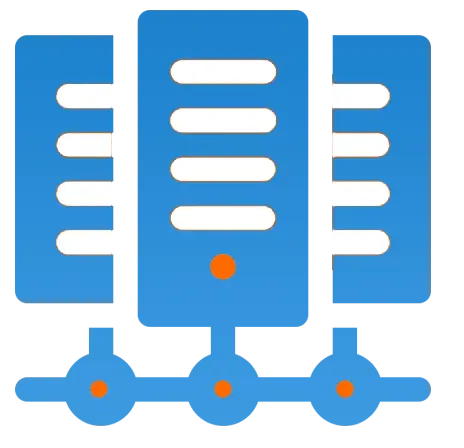Get 69% Off on Cloud Hosting : Claim Your Offer Now!
- Products
-
Compute
Compute
- Predefined TemplatesChoose from a library of predefined templates to deploy virtual machines!
- Custom TemplatesUse Cyfuture Cloud custom templates to create new VMs in a cloud computing environment
- Spot Machines/ Machines on Flex ModelAffordable compute instances suitable for batch jobs and fault-tolerant workloads.
- Shielded ComputingProtect enterprise workloads from threats like remote attacks, privilege escalation, and malicious insiders with Shielded Computing
- GPU CloudGet access to graphics processing units (GPUs) through a Cyfuture cloud infrastructure
- vAppsHost applications and services, or create a test or development environment with Cyfuture Cloud vApps, powered by VMware
- Serverless ComputingNo need to worry about provisioning or managing servers, switch to Serverless Computing with Cyfuture Cloud
- HPCHigh-Performance Computing
- BaremetalBare metal refers to a type of cloud computing service that provides access to dedicated physical servers, rather than virtualized servers.
-
Storage
Storage
- Standard StorageGet access to low-latency access to data and a high level of reliability with Cyfuture Cloud standard storage service
- Nearline StorageStore data at a lower cost without compromising on the level of availability with Nearline
- Coldline StorageStore infrequently used data at low cost with Cyfuture Cloud coldline storage
- Archival StorageStore data in a long-term, durable manner with Cyfuture Cloud archival storage service
-
Database
Database
- MS SQLStore and manage a wide range of applications with Cyfuture Cloud MS SQL
- MariaDBStore and manage data with the cloud with enhanced speed and reliability
- MongoDBNow, store and manage large amounts of data in the cloud with Cyfuture Cloud MongoDB
- Redis CacheStore and retrieve large amounts of data quickly with Cyfuture Cloud Redis Cache
-
Automation
Automation
-
Containers
Containers
- KubernetesNow deploy and manage your applications more efficiently and effectively with the Cyfuture Cloud Kubernetes service
- MicroservicesDesign a cloud application that is multilingual, easily scalable, easy to maintain and deploy, highly available, and minimizes failures using Cyfuture Cloud microservices
-
Operations
Operations
- Real-time Monitoring & Logging ServicesMonitor & track the performance of your applications with real-time monitoring & logging services offered by Cyfuture Cloud
- Infra-maintenance & OptimizationEnsure that your organization is functioning properly with Cyfuture Cloud
- Application Performance ServiceOptimize the performance of your applications over cloud with us
- Database Performance ServiceOptimize the performance of databases over the cloud with us
- Security Managed ServiceProtect your systems and data from security threats with us!
- Back-up As a ServiceStore and manage backups of data in the cloud with Cyfuture Cloud Backup as a Service
- Data Back-up & RestoreStore and manage backups of your data in the cloud with us
- Remote Back-upStore and manage backups in the cloud with remote backup service with Cyfuture Cloud
- Disaster RecoveryStore copies of your data and applications in the cloud and use them to recover in the event of a disaster with the disaster recovery service offered by us
-
Networking
Networking
- Load BalancerEnsure that applications deployed across cloud environments are available, secure, and responsive with an easy, modern approach to load balancing
- Virtual Data CenterNo need to build and maintain a physical data center. It’s time for the virtual data center
- Private LinkPrivate Link is a service offered by Cyfuture Cloud that enables businesses to securely connect their on-premises network to Cyfuture Cloud's network over a private network connection
- Private CircuitGain a high level of security and privacy with private circuits
- VPN GatewaySecurely connect your on-premises network to our network over the internet with VPN Gateway
- CDNGet high availability and performance by distributing the service spatially relative to end users with CDN
-
Media
-
Analytics
Analytics
-
Security
Security
-
Network Firewall
- DNATTranslate destination IP address when connecting from public IP address to a private IP address with DNAT
- SNATWith SNAT, allow traffic from a private network to go to the internet
- WAFProtect your applications from any malicious activity with Cyfuture Cloud WAF service
- DDoSSave your organization from DoSS attacks with Cyfuture Cloud
- IPS/ IDSMonitor and prevent your cloud-based network & infrastructure with IPS/ IDS service by Cyfuture Cloud
- Anti-Virus & Anti-MalwareProtect your cloud-based network & infrastructure with antivirus and antimalware services by Cyfuture Cloud
- Threat EmulationTest the effectiveness of cloud security system with Cyfuture Cloud threat emulation service
- SIEM & SOARMonitor and respond to security threats with SIEM & SOAR services offered by Cyfuture Cloud
- Multi-Factor AuthenticationNow provide an additional layer of security to prevent unauthorized users from accessing your cloud account, even when the password has been stolen!
- SSLSecure data transmission over web browsers with SSL service offered by Cyfuture Cloud
- Threat Detection/ Zero DayThreat detection and zero-day protection are security features that are offered by Cyfuture Cloud as a part of its security offerings
- Vulnerability AssesmentIdentify and analyze vulnerabilities and weaknesses with the Vulnerability Assessment service offered by Cyfuture Cloud
- Penetration TestingIdentify and analyze vulnerabilities and weaknesses with the Penetration Testing service offered by Cyfuture Cloud
- Cloud Key ManagementSecure storage, management, and use of cryptographic keys within a cloud environment with Cloud Key Management
- Cloud Security Posture Management serviceWith Cyfuture Cloud, you get continuous cloud security improvements and adaptations to reduce the chances of successful attacks
- Managed HSMProtect sensitive data and meet regulatory requirements for secure data storage and processing.
- Zero TrustEnsure complete security of network connections and devices over the cloud with Zero Trust Service
- IdentityManage and control access to their network resources and applications for your business with Identity service by Cyfuture Cloud
-
-
Compute
- Solutions
-
Solutions
Solutions
-
 Cloud
Hosting
Cloud
Hosting
-
 VPS
Hosting
VPS
Hosting
-
GPU Cloud
-
 Dedicated
Server
Dedicated
Server
-
 Server
Colocation
Server
Colocation
-
 Backup as a Service
Backup as a Service
-
 CDN
Network
CDN
Network
-
 Window
Cloud Hosting
Window
Cloud Hosting
-
 Linux
Cloud Hosting
Linux
Cloud Hosting
-
Managed Cloud Service
-
Storage as a Service
-
 VMware
Public Cloud
VMware
Public Cloud
-
 Multi-Cloud
Hosting
Multi-Cloud
Hosting
-
 Cloud
Server Hosting
Cloud
Server Hosting
-
 Bare
Metal Server
Bare
Metal Server
-
 Virtual
Machine
Virtual
Machine
-
 Magento
Hosting
Magento
Hosting
-
Remote Backup
-
 DevOps
DevOps
-
 Kubernetes
Kubernetes
-
 Cloud
Storage
Cloud
Storage
-
NVMe Hosting
-
 DR
as s Service
DR
as s Service
-
-
Solutions
- Marketplace
- Pricing
- Resources
- Resources
-
By Product
Use Cases
-
By Industry
- Company
-
Company
Company
-
Company
Benefits of Cloud Native Applications
Table of Contents
The Cloud Native Computing Foundation defines “cloud native technologies” as technologies that enable organizations to build and run scalable applications in the public, private, and hybrid cloud environments that have become a standard part of our world today.
Thus, the use of these techniques enables loosely coupled systems that are resilient, manageable, and observable, according to the foundation, to become resilient, manageable, and observable. In addition to allowing engineers to implement high-impact changes frequently and predictably without needing a lot of resources, these tools are based on robust automation.
However, what exactly does this mean? What are the benefits that your company can reap from these types of technologies and applications? Find out more about this by reading the following paragraphs!
What are Cloud Native Applications?
In relation to the cloud-native technologies themselves, how do cloud-native applications differ from cloud-native technologies, and how do they relate to the general concept of cloud-native technologies as a whole?
It is common for traditional apps to have a large code footprint, to be complex and to require a lot of resources and time to update their code. There is often a close relationship between the architecture of these traditional applications and the operating system, hardware, storage, and support services that are underneath it. As a result of this, migration and scaling of the application over new infrastructures are also complex and risky processes.
Unlike web-based apps that are designed to be tightly coupled, cloud-native applications are architected with independent, loosely coupled services. As a result of their smaller size, they are often easier to develop, deploy, and iterate upon than traditional apps. This is due to the fact that they have been built in a way that allows them to take advantage of cloud computing models to increase speed, flexibility, and quality while reducing deployment risks at the same time.
It is well known that cloud-native apps are superior to traditional apps in delivering business value as a result of how they are developed. It might be possible for them to incorporate user feedback for continuous improvement rapidly, for instance, if they have the ability to incorporate it. By continuously iterating and introducing new features faster, they can enable an organization to create a great customer experience and foster customer loyalty by providing new features faster and fostering more customer loyalty.
How are Cloud Native Apps Built?
The microservices architecture is a key component of cloud-native applications. A service-oriented architecture is an approach to software development that is based on the creation of discrete, standalone services with a single purpose. In addition to these single-function services, which are also known as microservices, these services can also be deployed, upgraded, improved, and automated in a way that is independent from any other microservice. Since these applications are independent of each other, frequent, iterative updates are possible without causing any disruption to the end-user experience.
It is common for developers to run microservices inside containers, which pack software and all its dependencies together, making it possible for an application to run in any environment. As previously mentioned, containers are usually lightweight, easy to deploy, and also amplify the benefits inherent in microservice architectures.
Advantages of Using Cloud Native Apps
There are a number of advantages to using cloud-native applications, including:
Unlike traditional monolithic apps, cloud-native applications can be easier to manage as iterative improvements are made using Agile and DevOps processes, as opposed to traditional monolithic apps.
It is possible to add new and enhanced features to cloud-native applications incrementally and automatically by using individual microservices combined to form a cloud-native architecture.
In most cases, improvements can be made in a non-intrusive manner, so end users will not notice any downtime or disruption during the process.
The adaptable infrastructure that underpins cloud-native applications makes it easier to scale up or down as needed.
There is no doubt that cloud-native development is more in line with the speed, innovation, and agility required by today’s business environment.
Takeaway
Having demonstrated experience working with cloud-native applications, Cyfuture Cloud is able to assist your company with its cloud native services to achieve your goals, helping you to reach your business objectives. You can find out how Cyfuture Cloud can assist you in achieving this goal by checking out the website!
Recent Post

Stay Ahead of the Curve.
Join the Cloud Movement, today!
© Cyfuture, All rights reserved.
Send this to a friend

 Pricing
Calculator
Pricing
Calculator
 Power
Power
 Utilities
Utilities VMware
Private Cloud
VMware
Private Cloud VMware
on AWS
VMware
on AWS VMware
on Azure
VMware
on Azure Service
Level Agreement
Service
Level Agreement 


















